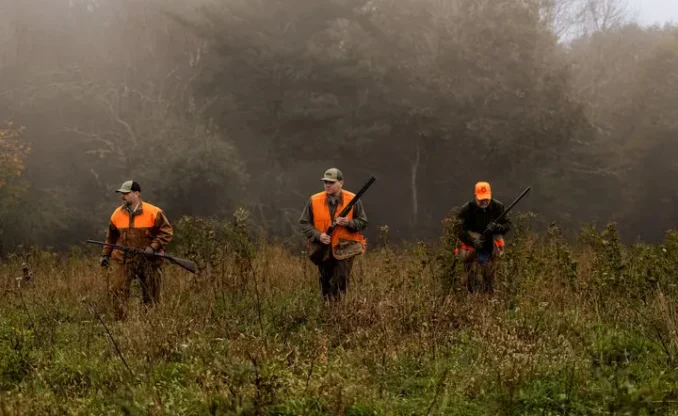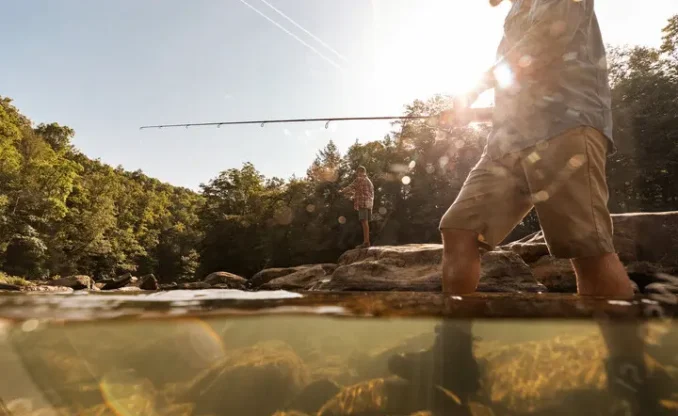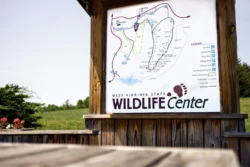Good Food and Cover
Black Huckleberry – Gaylussacia baccata
Box Huckleberry – G. brachycera
Dwarf Huckleberry – F. dumosa
Tall Huckleberry (Dangleberry) – G. frondosa
Huckleberries – Branching shrubs with alternate, entire or toothed leaves and small flowers in lateral clusters (racemes). Flowers urn-shaped or bell-shaped and 5-lobed. Fruit is berry-like, fleshy with 10 seeds.
Form
Branching, low shrubs, forming colonies.
Black- Much branched, rigid, upright, to 3 feet tall (usually about 2 feet tall).
Box- Smooth, evergreen, to 15 inches tall, spreading limbs.
Dwarf- Low bushy, to 20 inches tall.
Tall- Shrub to 6 feet tall.
Twigs and Bark
Slender twigs are usually reddish, pinkish or green. Do not have the numerous warty specks on the younger twigs as do blueberries.
Black- Twigs hairy, reddish.
Box- Twigs with sharply angled sides.
Dwarf- Twigs usually hairy, reddish.
Tall- Twigs pinkish with a heavy white cast (bloom).
Leaves
Alternate, simple and short stalked (petioles).
Black- Elliptic with sharp pointed tip, thin, smooth margins, 1 to 3 inches long, green or yellowish above, yellowish resin dots (glands) beneath and above (use hand lens to see), bright red attractive color in autumn.
Box- Evergreen, round-elliptic, thick leathery, less than 1 inch long, smooth margin or with small teeth, glossy dark green above, turns reddish-green in fall.
Dwarf- Long-elliptic with a bristle tip, smooth margins, leathery texture, 1 to 2 inches long, yellowish resin dots above and beneath, dark green and glossy above.
Tall- Round-elliptic, white downy beneath, 1 to 3 inches long, yellowish resin dots beneath, somewhat bluish green above.
Flowers
Small (1/4 inch long) bell or urn-shaped in short lateral clusters.
Black- Reddish in color.
Box, Dwarf and Tall- Whitish with pink tinge or pinkish.
Fruit
Fleshy, edible and contains 10 seeds.
Black- Shiny black (May-June).
Box – Light blue, sweet (May-June).
Dwarf- Shiny black, watery (May-June).
Tall- Blue with whitish cast (bloom) (June-Sept.)
WV Range
Black- Common throughout.
Box- Greenbrier, Mercer, Monroe , Pocahontas and Summers.
Dwarf- Greenbrier, Hardy, Kanawha and Raleigh.
Tall- Not native to WV but occurring in nearby states and is of considerable value to wildlife and wild food loving humans.
Native Habitat
Black- Dry, sandy or rocky acid opening or open woods, especially on open cliff tops.
Box- Moist or dry woods.
Dwarf- Sandy or rocky soil (sometimes in swamps).
Tall- Upland woods.
Wildlife Uses
Huckleberries are very important for cover, fruits and browse. Ruffed grouse, bobwhite quail, turkey, catbird, orchard oriole, scarlet tanager, twohee and gray and fox squirrels are known to readily eat on huckleberry fruits. Deer browse twigs and foliage. The larva of the attractive Huckleberry Spinx, Paonias astylus, is host specific in its feeding on huckleberry/blueberry foliage. Several small butterflies including the early spring flying Brown Elfin and Henry’s Elfin occasionally lay their eggs on huckleberry. Bumblebees and smaller wild bees work the flowers for nectar (and serve as essential pollinating agents).
Horticulture
Because of its wide natural distribution the average homeowner has readiest access to “starts” of black huckleberry, G. baccata. Portions of colonies are transplantable during the dormant season. Though it will grow well in shade it fruits more abundantly if grown exposed to full sun. As with most Ericaceous plants, huckleberries do not r4espond well to “sweet” (high pH) soils so a soil pH test of intended sites would be appropriate. Soils with pH greater than 6.0 can be acidified with addition of sulfur or aluminum sulfate. Moderate fertilization with acid producing fertilizers formulated for azaleas and rhododendron is also beneficial. Like blueberries, huckleberries are shallow-rooted and cultivation does more harm than good; mulching with sawdust, especially pine sawdust, or leaf mulch is both a satisfactory way to stimulate root growth and control weeds.
Light: Light shade to full sunlight (Box –will thrive in shade).
Soil Moisture: Dry sandy soils (Dwarf- will also grow in wet soils).
Soil pH: Acid
Problems: Relatively trouble free from pests.
Compiled by: Robert Deal, nurseryman and professor of biology/botany at Glenville State College, Glenville , West Virginia .
Written by West Virginia Native Plant Society members and jointly published with the WV Wildlife Diversity Program.



